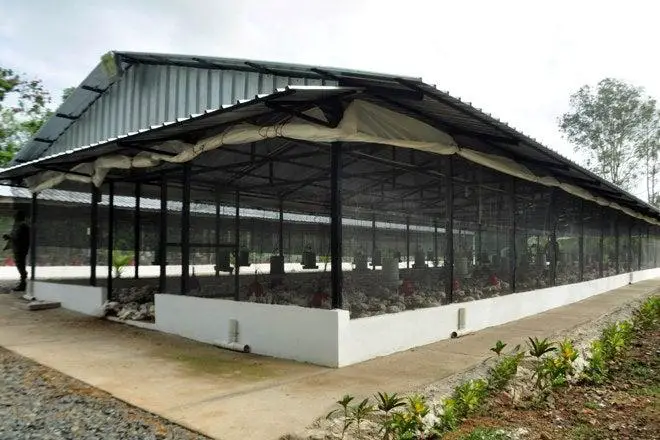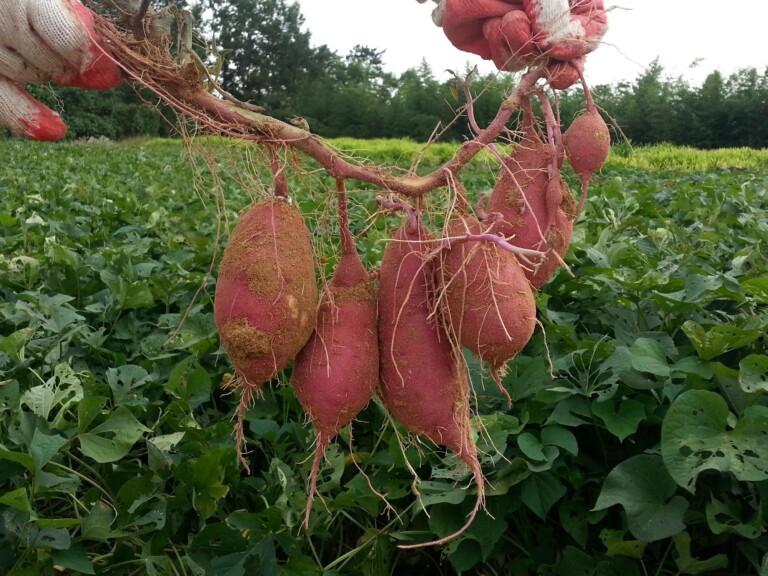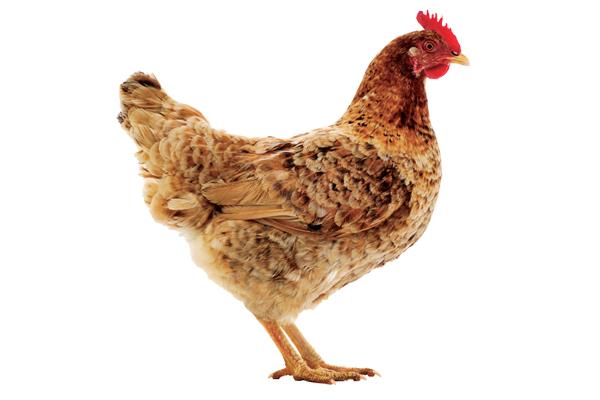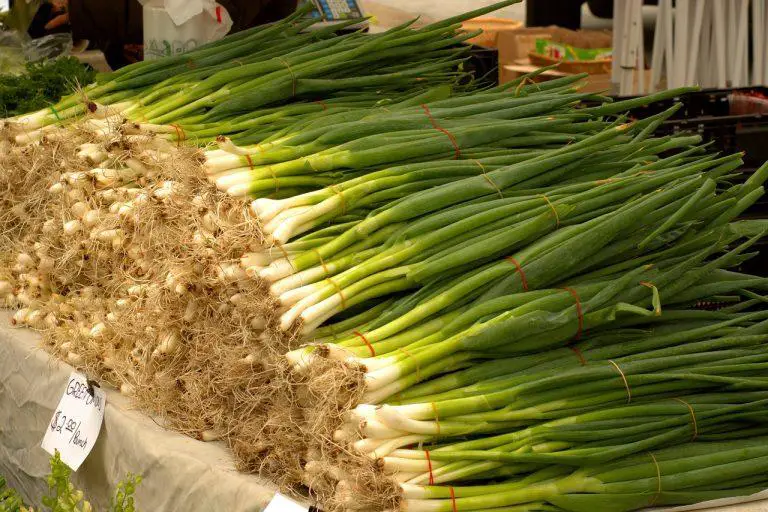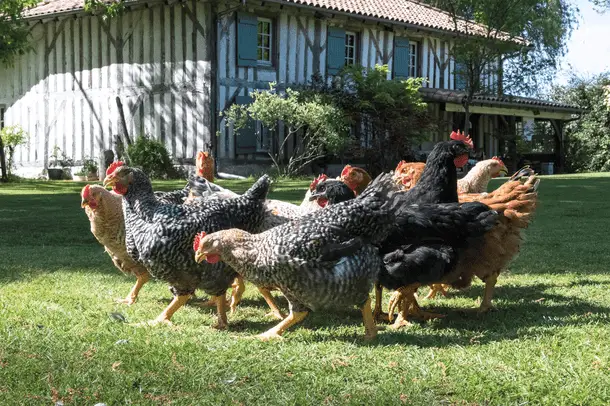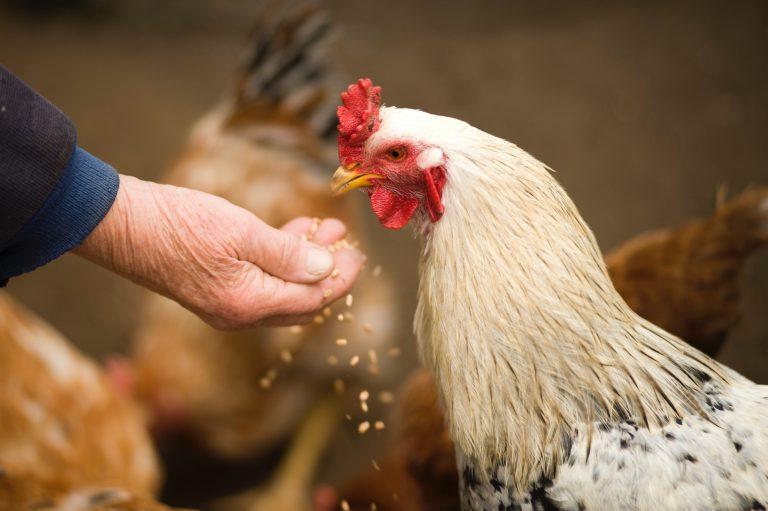Maximizing Profit on a Quarter Acre in Africa: A Guide To Earning 100,000 Kenyan Shillings ($1000) Monthly
In Africa, where land resources are often limited, making a substantial income on a quarter-acre of land may seem like an insurmountable challenge. However, with innovative agricultural practices and a keen business sense, it is possible to achieve significant financial gains. This article explores various income-generating activities and strategies to help farmers in Africa earn 100,000 Kenyan Shillings ($1000) per month on a quarter-acre of land.

1. Market Gardening: High-Value Crops
Market gardening, also known as market farming or intensive vegetable production, is a farming practice that concentrates on growing high-value crops for sale in local markets, restaurants, or directly to consumers. This method emphasizes efficient land use and careful selection of crops to maximize profits on limited agricultural space, such as a quarter-acre in Africa. Let’s delve deeper into the strategies and considerations for successful market gardening:
Selecting High-Value Crops:
Choosing the right crops is the foundation of a profitable market gardening venture. The selection should be based on factors such as local demand, climatic conditions, and the crop’s yield potential. High-value crops typically include:
- Leafy Greens: Lettuce, spinach, kale, and arugula are popular choices, given their nutritional value and consistent demand from health-conscious consumers and restaurants.
- Herbs: Culinary herbs like basil, cilantro, mint, and parsley have strong demand in local markets, and their compact growth allows for dense planting.
- Exotic Vegetables: Consider growing exotic or gourmet vegetables that are not readily available in the region. Examples include baby carrots, heirloom tomatoes, or colored bell peppers.
- Microgreens: These young and tender seedlings are rich in nutrients and are favored by chefs and health enthusiasts, making them a potentially lucrative choice.
- Berries: If the climate allows, strawberries, raspberries, or blueberries can be cultivated for their premium prices and versatility in various culinary applications.
- Baby Vegetables: Harvesting vegetables before they reach full size, such as baby carrots or zucchini, can command higher prices due to their tenderness and aesthetic appeal.
Intensive Cultivation Techniques:
Market gardening relies on intensive cultivation methods to maximize productivity within limited space. These techniques include:
- Succession Planting: By staggering planting times, farmers ensure a continuous harvest throughout the growing season, maintaining a steady supply to meet market demands.
- Companion Planting: This practice involves growing complementary crops together to improve pest control, soil fertility, and space utilization.
- Intercropping: Interplanting compatible crops in the same area can enhance yields and protect against crop failure, promoting biodiversity on the farm.
- Vertical Gardening: Utilizing trellises, stakes, or cages allows vining crops like tomatoes, cucumbers, or beans to grow vertically, saving space and improving accessibility.
- Raised Beds: Constructing raised beds with fertile soil improves drainage, provides better aeration, and reduces weed competition, promoting healthy plant growth.
Soil Health and Nutrient Management:
Maintaining soil health is vital for successful market gardening. Implementing sustainable practices to enrich soil fertility includes:
- Compost and Organic Matter: Regularly adding compost or well-rotted organic matter enhances soil structure and nutrient content, reducing the need for synthetic fertilizers.
- Crop Rotation: Rotating crops seasonally helps prevent soil depletion and minimizes the risk of pest and disease buildup, optimizing overall productivity.
- Cover Cropping: Sowing cover crops during fallow periods protects the soil from erosion, fixes nitrogen, and adds organic matter when tilled back into the soil.
- Mulching: Applying organic mulch around plants conserves moisture, suppresses weeds, and maintains a stable soil temperature, benefitting plant growth.
Pest and Disease Management:
In market gardening, proactive pest and disease management is essential to safeguard crops and ensure high-quality produce:
- Integrated Pest Management (IPM): Implementing IPM strategies involves using a combination of biological, mechanical, and chemical control methods to manage pests while minimizing environmental impact.
- Crop Diversity: Planting a variety of crops reduces the risk of widespread infestations since different pests target specific plants.
- Crop Hygiene: Practicing good sanitation, removing crop residues, and cleaning tools help prevent the spread of diseases.
Marketing and Value-Chain Connections:
For a successful market gardening business, establishing effective marketing strategies and value-chain connections is crucial:
- Understanding the Market: Conduct market research to identify consumer preferences, trends, and potential gaps in the local market.
- Direct Sales and Farmers’ Markets: Participate in farmers’ markets or establish a farm stand to sell directly to consumers, connecting with the community and commanding better prices.
- Restaurant Sales: Build relationships with local restaurants and chefs who value fresh, high-quality produce, establishing a consistent and reliable customer base.
- Community Supported Agriculture (CSA): Running a CSA program allows consumers to subscribe to weekly produce boxes, providing farmers with a guaranteed market and income.
- Online Platforms: Utilize online platforms and social media to showcase produce, connect with potential customers, and promote the farm’s values and story.
Market gardening is a viable and potentially lucrative agricultural practice that enables farmers to maximize profits on a quarter-acre of land in Africa. By carefully selecting high-value crops, employing intensive cultivation techniques, maintaining soil health, and employing effective pest and disease management, farmers can create a sustainable and profitable venture. Building strong connections within the value chain and implementing successful marketing strategies will further support the growth and success of market gardening businesses, ultimately contributing to the prosperity of small-scale farmers in Africa.
2. Vertical Farming: Utilizing Space Efficiently
Vertical farming is a cutting-edge agricultural technique that represents a paradigm shift in how crops are cultivated. By taking advantage of vertical space, farmers can optimize land use and achieve higher yields even in limited areas. This method of growing crops upwards, instead of traditional horizontal fields, has garnered attention for its potential to address the challenges of urbanization, population growth, and climate change. Here’s an in-depth exploration of vertical farming and its various facets:
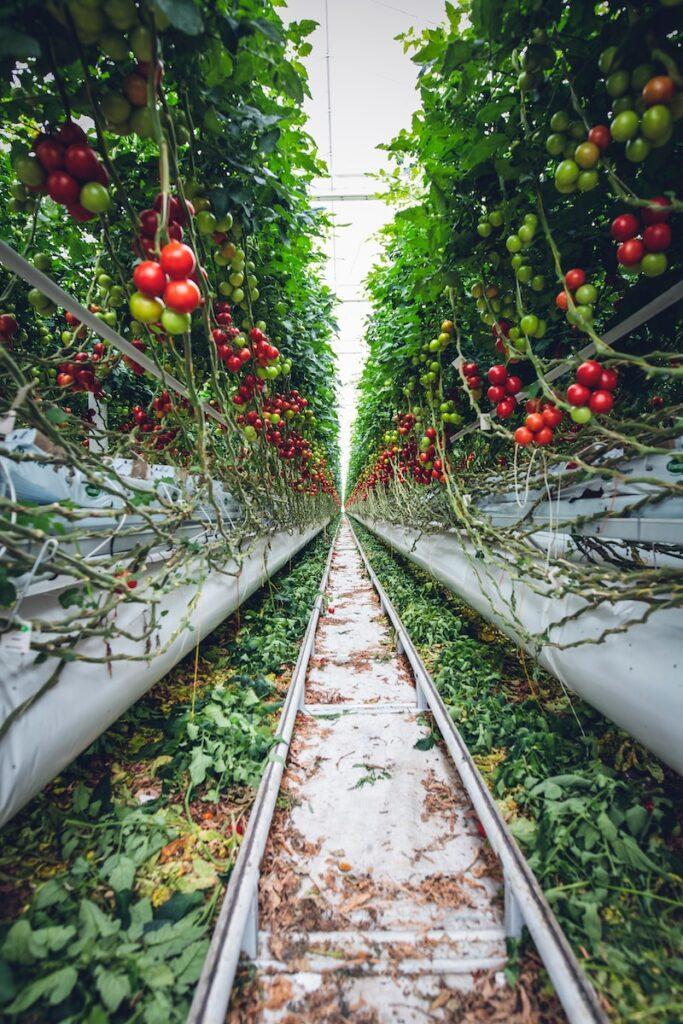
Benefits of Vertical Farming:
- Space Optimization: One of the primary advantages of vertical farming is its ability to maximize land utilization. By stacking crops vertically, farmers can grow several layers of plants in the same footprint that would traditionally support only one layer.
- Year-Round Production: Vertical farms are often set up in controlled environments like greenhouses or indoor facilities, allowing for year-round crop production irrespective of external weather conditions. This consistency ensures a stable income stream for farmers.
- Resource Efficiency: Vertical farming typically employs soilless growing methods, such as hydroponics or aeroponics, which consume significantly less water than traditional field agriculture. Additionally, nutrient-rich water solutions can be recycled, minimizing waste.
- Reduced Transportation Costs: Urban vertical farms can be strategically located near their target markets, reducing the need for long-distance transportation. This decreases carbon emissions and supports local food systems.
- Protection from External Threats: Vertical farming in enclosed environments protects crops from pests, diseases, and extreme weather events, safeguarding the harvest and maintaining consistent quality.
Hydroponics and Aeroponics:
Hydroponics and aeroponics are two commonly used techniques in vertical farming. These soilless methods allow crops to grow in nutrient-rich water solutions or mist, providing the plants with essential nutrients while reducing water consumption.
- Hydroponics: In hydroponic systems, plants are grown in a carefully balanced solution of water and nutrients. The plant’s roots are either submerged directly in the nutrient solution (deep water culture) or supported by an inert medium like perlite, rockwool, or coconut coir.
- Aeroponics: Aeroponic systems suspend plant roots in the air, with nutrient-rich mist sprayed directly onto the roots. This method optimizes nutrient absorption and promotes faster growth, making it ideal for vertical farming setups.
Vertical Farming Structures:
Various structures can be employed in vertical farming to accommodate the growth of crops in layers:
- Vertical Shelves: Utilizing shelving units with grow lights allows farmers to stack crops vertically, creating multiple growing levels. Each shelf can host different crops or growth stages, optimizing space utilization.
- Vertical Towers: Tower structures are designed with multiple planting levels, resembling vertical gardens. These towers are particularly suitable for small-scale setups and can be placed indoors or outdoors.
- Green Walls: Also known as living walls or vertical gardens, green walls feature plants growing on vertical surfaces. These walls can be part of larger buildings or stand-alone structures.
- Stacked Containers: Modified shipping containers or repurposed structures can be stacked on top of each other, serving as controlled-environment farms with several levels of cultivation.
Crop Selection in Vertical Farming:
Certain crops are better suited for vertical farming due to their growth habits and space requirements. Some popular choices include:
- Leafy Greens: Lettuce, kale, Swiss chard, and spinach are well-suited for vertical farming due to their compact growth and short harvesting cycles.
- Herbs: Basil, cilantro, mint, and other herbs thrive in vertical systems, providing fresh flavors and aromas to urban consumers.
- Strawberries: Vertical farming can support the growth of strawberries, which can be positioned at different heights for ease of harvesting.
- Microgreens: With their fast growth and high nutritional value, microgreens are a popular choice for vertical farming systems.
Energy and Lighting Considerations:
Vertical farms often rely on artificial lighting to supplement natural sunlight. LED lights are commonly used as they are energy-efficient and can be tailored to provide specific light spectrums for optimal plant growth. However, energy consumption can be a significant cost factor, and sustainable energy sources should be explored to minimize environmental impact.
Challenges and Future Prospects:
Vertical farming, while promising, faces certain challenges, including high setup costs, technical expertise requirements, and energy consumption. However, as technology advances and economies of scale improve, these challenges are gradually being addressed. In the future, vertical farming holds the potential to play a critical role in urban food production, increasing food security, reducing the carbon footprint of agriculture, and revolutionizing the way we grow and consume food.
Vertical farming represents a breakthrough in agricultural practices, offering a solution to the challenges posed by limited land availability and population growth. By optimizing space, utilizing efficient cultivation techniques like hydroponics and aeroponics, and carefully selecting suitable crops, farmers can achieve higher yields and generate increased revenue. As this innovative farming method continues to evolve, it holds the promise of contributing significantly to sustainable food production, resource conservation, and the transformation of urban landscapes into greener, more resilient environments.
3. Specialty Crops: Tapping into Niche Markets
Cultivating specialty crops and unique varieties presents a promising opportunity for farmers to tap into niche markets and unlock potential profitability. Unlike conventional crops, specialty crops are distinct in their characteristics, flavors, or growing requirements, catering to specific consumer preferences and demands. By focusing on these specialized offerings, farmers can gain a competitive edge, fetch premium prices, and create a sustainable income stream. Let’s explore the various aspects of cultivating specialty crops and the steps involved in maximizing profits:
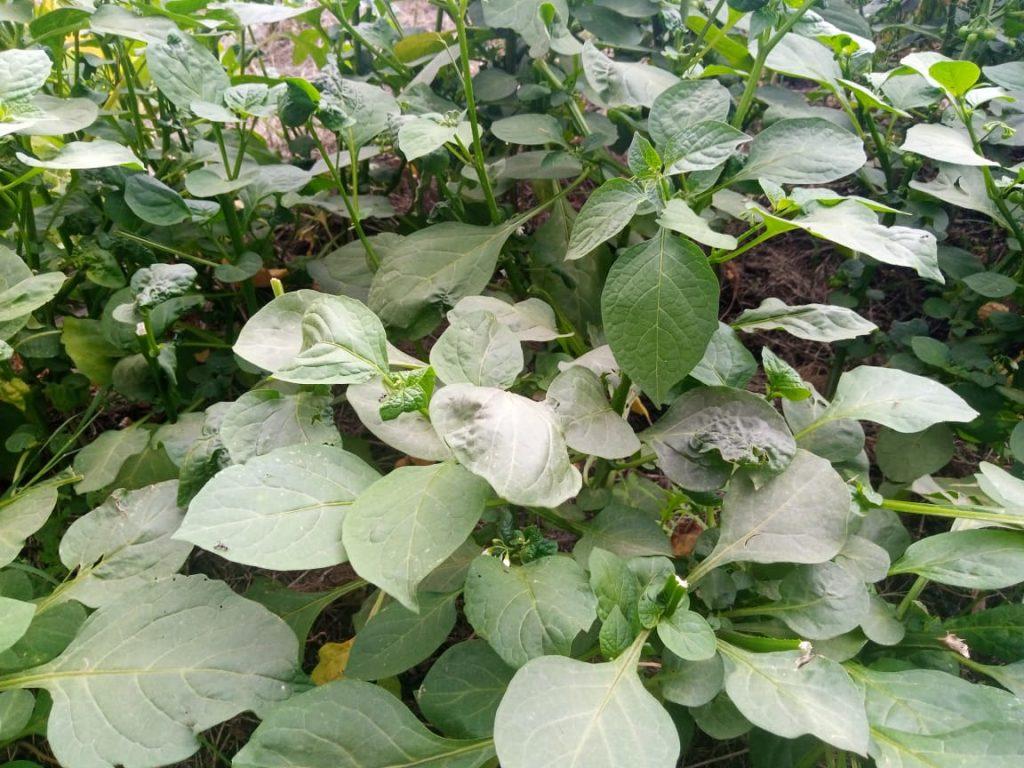
Identifying Marketable Specialty Crops:
- Market Research: Conduct thorough market research to identify niche markets and consumer trends. Understand the preferences of local consumers, restaurants, gourmet shops, and potential export opportunities.
- Local Climate and Soil Suitability: Assess the region’s climate and soil conditions to determine which specialty crops are best suited for successful cultivation. Specialty crops often have specific environmental requirements for optimal growth.
- Cultural Significance: Consider specialty crops that hold cultural or historical significance in the region. Such crops may appeal to a niche audience with a preference for traditional or heirloom varieties.
Selecting Specialty Crops:
- Exotic Fruits and Vegetables: Explore exotic fruits and vegetables that are not commonly grown in the region but have potential demand due to their unique flavors and nutritional benefits. Examples include dragon fruit, guava, or heirloom tomatoes.
- Ethnic Crops: Specialty crops that are popular in certain ethnic cuisines can find a niche market among specific communities. For instance, Asian vegetables like bok choy or daikon radish might have a strong demand in areas with a significant Asian population.
- Heritage Varieties: Heritage or heirloom crops with distinct flavors and appearances can appeal to consumers seeking diversity and quality in their food choices.
- Edible Flowers and Microgreens: Cultivating edible flowers or microgreens, such as nasturtiums or amaranth, can cater to the culinary creativity of chefs and health-conscious consumers.
Cultivation and Management:
- Quality Control: Ensure strict quality control measures to maintain the unique characteristics and high quality of the specialty crops. Consistency in appearance, taste, and texture is crucial to satisfy discerning consumers.
- Sustainable Farming Practices: Employ eco-friendly and sustainable farming methods to appeal to environmentally conscious consumers. Emphasize the absence of chemical pesticides or synthetic fertilizers to enhance the appeal of specialty crops.
- Crop Protection: As specialty crops may be vulnerable to specific pests or diseases, implement targeted pest management strategies to safeguard the harvest.
- Proper Harvesting and Handling: Train farm workers in proper harvesting and handling techniques to minimize damage to delicate specialty crops and maintain their freshness.
Marketing and Distribution:
- Branding and Packaging: Develop a unique brand identity for your specialty crops, highlighting their distinctive qualities. Attractive and informative packaging can enhance their perceived value.
- Direct Sales: Explore opportunities for direct sales, such as setting up a farm stand, participating in farmers’ markets, or selling through community-supported agriculture (CSA) programs. Direct sales allow farmers to connect with consumers and share the story behind their specialty crops.
- Supplying Local Restaurants and Retailers: Forge partnerships with local restaurants, gourmet shops, or specialty stores that appreciate and value unique, locally-grown produce.
- Online Platforms: Leverage the power of e-commerce by selling specialty crops through online platforms, reaching a broader audience beyond the local region.
Collaboration and Networking:
- Collaborate with Chefs and Culinary Experts: Engage with chefs and culinary experts to understand their needs and preferences for specialty crops. Collaborative efforts can lead to innovative dishes and increased demand.
- Joining Specialty Crop Associations: Become a member of specialty crop associations or local agricultural organizations to access valuable resources, share knowledge, and stay updated on industry trends.
Cultivating specialty crops and unique varieties presents an exciting avenue for farmers seeking to tap into niche markets and maximize profits. By conducting thorough market research, selecting suitable crops, implementing sustainable farming practices, and focusing on effective marketing and distribution strategies, farmers can thrive in the niche market landscape. Specialty crops not only offer financial rewards but also contribute to the diversity of the agricultural sector, fostering a deeper connection between producers and consumers and elevating the culinary experiences of communities around the world.
4. Micro Livestock: Efficient Animal Husbandry
Micro livestock, also known as small-scale or mini livestock, offer a sustainable and space-efficient solution to animal husbandry for farmers seeking to diversify their income streams. These smaller animals, such as rabbits, quails, or chickens, require minimal land and resources compared to traditional livestock like cattle or pigs. When managed efficiently, micro livestock can generate a steady income through the production of meat, eggs, or other valuable products. Let’s delve deeper into the world of micro livestock and the key strategies for successful animal husbandry:

Selecting Micro Livestock:
- Rabbits: Rabbits are an excellent choice for micro livestock farming as they have a rapid reproduction rate, providing a consistent supply of meat. They also require less space and feed compared to larger livestock.
- Quails: Quails are small birds that lay small eggs, making them suitable for small-scale egg production. They are relatively easy to care for and can adapt well to confined spaces.
- Chickens: Backyard chickens are a popular choice for micro livestock farming, producing eggs and meat for personal consumption or local markets. They are relatively low-maintenance and can thrive in small spaces.
Efficient Micro Livestock Management:
- Housing and Space Utilization: Design and construct appropriate housing structures that optimize space utilization. Utilize vertical space or multi-tiered cages for quails and rabbits to maximize capacity.
- Nutrition and Feeding: Ensure a balanced and nutritious diet for the micro livestock to promote healthy growth and productive egg-laying. Combining commercial feeds with locally available feed sources can help manage costs.
- Reproduction Management: Implement proper breeding and reproduction management practices to maintain a continuous supply of offspring for meat or egg production.
- Healthcare and Biosecurity: Regularly monitor the health of micro livestock and promptly address any signs of disease. Maintain proper biosecurity measures to prevent the spread of infections.
- Waste Management: Develop a waste management plan to handle manure and bedding efficiently. Proper composting or recycling of waste can contribute to sustainable farming practices.
Diversifying Income Streams:
- Egg Production: Micro livestock like quails and chickens can produce a consistent supply of eggs for sale in local markets or to neighbors and community members.
- Meat Production: Raising rabbits or chickens for meat can provide a valuable source of protein for both the farmer’s family and potential customers.
- Value-Added Products: Explore opportunities to create value-added products, such as quail or chicken sausages, which can command higher prices in specialty markets.
- Fertilizer Production: Micro livestock waste, when composted, can be a valuable source of organic fertilizer for gardens or small-scale crop production.
Marketing and Sales:
- Direct Sales: Connect with local consumers by offering direct sales of eggs, meat, or value-added products through farm stands, farmers’ markets, or community-supported agriculture (CSA) programs.
- Local Restaurants and Retailers: Supplying eggs or meat to local restaurants and specialty food stores can create a stable and consistent market for micro livestock products.
- Online Platforms: Utilize online platforms and social media to reach a broader audience and promote the unique benefits of micro livestock products.
Sustainable Practices:
- Rotational Grazing: If applicable, practice rotational grazing for chickens, allowing them access to fresh pasture, which benefits both the birds and the land.
- Heritage Breeds: Consider raising heritage breeds of rabbits, quails, or chickens, as these breeds often have unique qualities and are well-suited for small-scale farming.
- Local Resources: Utilize locally available resources for feeding micro livestock, reducing the reliance on imported or expensive feed options.
Micro livestock offer a practical and space-efficient approach to animal husbandry, particularly for farmers with limited land resources. By selecting appropriate micro livestock, managing them efficiently, diversifying income streams, and implementing sustainable practices, farmers can create a successful and sustainable micro livestock enterprise. Additionally, connecting with local markets, embracing innovative marketing strategies, and maintaining high standards of animal welfare will contribute to the long-term success and viability of micro livestock farming, offering a reliable income source for farmers and contributing to the food security of local communities.
5. Aquaculture: Cultivating Freshwater Fish
Aquaculture, the farming of fish and other aquatic organisms, presents an exciting opportunity for farmers in regions with access to water bodies. Setting up a small fish pond can be a profitable venture when managed efficiently. Fish farming, also known as pisciculture, provides a sustainable source of protein and can generate substantial returns when the right fish species are selected and proper pond management practices are implemented. Let’s explore the world of aquaculture and the key strategies for successful freshwater fish farming:

Selecting Fish Species:
- Tilapia: Tilapia is a popular choice for freshwater fish farming due to its fast growth rate, adaptability to varying environmental conditions, and high tolerance for crowded conditions.
- Catfish: Catfish is another widely farmed fish known for its hardiness, rapid growth, and consumer demand for its mild-tasting meat.
- Trout: In colder regions, trout farming can be a viable option as they prefer cool water and are valued for their premium quality meat.
- Carp: Common carp, grass carp, and silver carp are commonly farmed species, especially in Asia, due to their ability to feed on plant matter and grow rapidly.
Pond Design and Construction:
- Site Selection: Choose a suitable site with access to a reliable water source and proper drainage. The location should also have protection from extreme weather events and predators.
- Pond Size: Determine the ideal pond size based on the chosen fish species, water availability, and the intended scale of the operation.
- Water Quality: Ensure good water quality by testing it regularly for parameters such as temperature, pH, dissolved oxygen, and ammonia levels.
- Aeration: Install aeration systems to maintain adequate dissolved oxygen levels in the water, as this is crucial for fish health and growth.
- Fencing and Predator Control: Install fences and netting to prevent fish from escaping and protect them from potential predators.
Fish Nutrition and Feeding:
- Balanced Diet: Provide fish with a well-balanced diet that meets their nutritional requirements for optimal growth and health.
- Supplementary Feeding: Supplement commercial fish feed with locally available food sources like algae, aquatic plants, or kitchen waste to reduce feed costs.
- Feeding Frequency: Feed fish multiple times a day, adjusting the feeding rate based on the fish’s age, size, and environmental conditions.
Health and Disease Management:
- Regular Monitoring: Monitor fish health regularly, checking for signs of disease, stress, or abnormalities.
- Quarantine Practices: Implement a quarantine system for new fish stock to prevent the introduction of diseases to the main pond.
- Vaccination and Medication: Follow appropriate vaccination and medication protocols to prevent and treat fish diseases as needed.
Harvesting and Marketing:
- Harvesting Timing: Time the harvesting process appropriately based on the fish’s size, market demand, and growth rates.
- Processing and Packaging: Ensure proper processing and packaging of the harvested fish to maintain product quality and hygiene standards.
- Marketing Channels: Establish relationships with local markets, retailers, restaurants, and direct consumers to create a steady market for the fish.
Sustainability and Environmental Considerations:
- Water Conservation: Implement water conservation measures to minimize water usage and wastage.
- Effluent Management: Manage pond effluents to avoid environmental pollution and recycle nutrient-rich water for irrigation.
- Ecosystem Balance: Avoid introducing non-native fish species that could disrupt the local ecosystem.
Aquaculture, specifically freshwater fish farming, presents a lucrative and environmentally sustainable opportunity for farmers in regions with access to water bodies. By selecting suitable fish species, investing in proper pond management, ensuring good water quality, and implementing efficient feeding and health practices, farmers can achieve successful fish farming operations. The careful execution of sustainable and responsible practices will not only lead to profitable ventures but also contribute to the conservation of aquatic ecosystems and the provision of a vital source of protein for local communities. Aquaculture, when managed with diligence and dedication, holds the promise of becoming a rewarding and thriving component of the global food production landscape.
6. Mushroom Cultivation: Tapping into the Fungi Market
Mushroom cultivation, also known as mycology or fungi farming, has emerged as a lucrative and sustainable income-generating activity in recent years. The demand for mushrooms has grown significantly due to their unique flavors, nutritional benefits, and diverse culinary applications. Unlike traditional agricultural crops, mushroom cultivation requires relatively low startup costs and can be conducted in small spaces, making it an attractive option for farmers seeking to tap into the fungi market. Let’s delve deeper into the world of mushroom cultivation and the strategies for success:
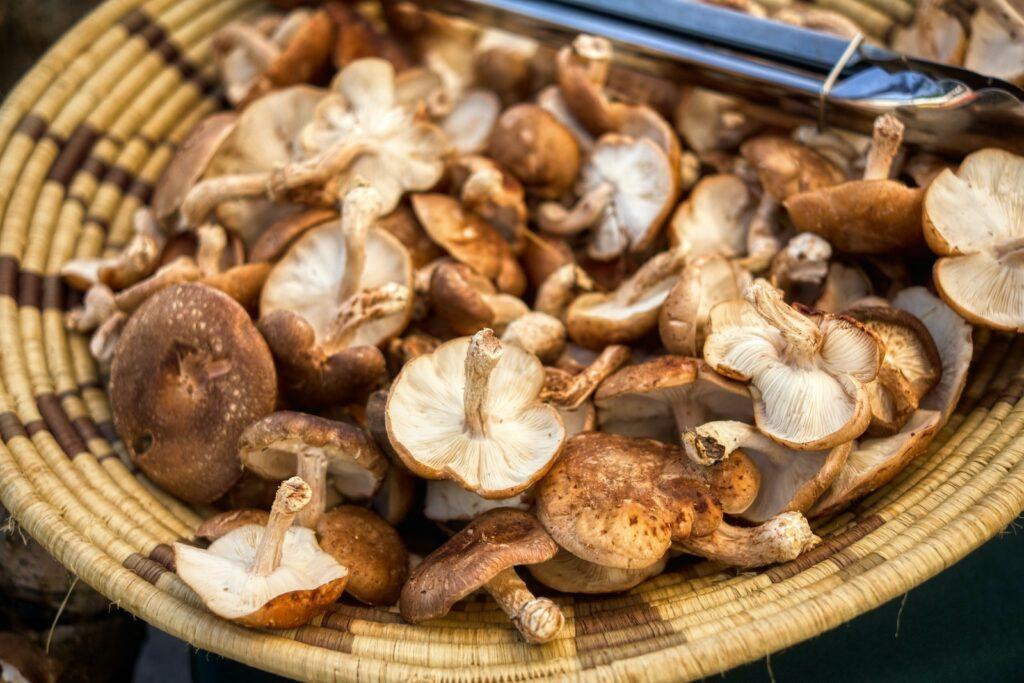
Selecting Mushroom Varieties:
- Button Mushrooms (Agaricus bisporus): Button mushrooms are the most commonly cultivated variety globally. They have a mild flavor and are versatile for various dishes.
- Oyster Mushrooms (Pleurotus ostreatus): Oyster mushrooms are popular for their delicate flavor and ease of cultivation. They can grow on a variety of substrates.
- Shiitake Mushrooms (Lentinula edodes): Shiitake mushrooms are valued for their smoky, earthy taste and are often used in Asian cuisine and medicinal practices.
- Reishi Mushrooms (Ganoderma lucidum): Reishi mushrooms are known for their potential health benefits and are sought after in the wellness and supplement markets.
Growing Substrates and Conditions:
- Substrate Selection: Mushrooms require a growing medium, known as a substrate. Common substrates include straw, sawdust, wood chips, and agricultural waste.
- Sterilization or Pasteurization: Depending on the substrate used, sterilization or pasteurization is essential to eliminate competing organisms and ensure a contamination-free growing environment.
- Temperature and Humidity: Different mushroom varieties have specific temperature and humidity requirements for optimal growth. Maintaining the right conditions is crucial for successful cultivation.
Efficient Space Utilization:
- Vertical Farming and Stacking: Since mushrooms grow vertically, farmers can stack multiple layers of growing containers to optimize space utilization.
- Shelves and Racks: Utilize shelves or racks to create multi-tiered growing spaces, allowing for more mushroom production in limited areas.
Quality Control and Disease Management:
- Hygiene Practices: Implement strict hygiene measures to prevent contamination during substrate preparation and mushroom cultivation.
- Quarantine: Isolate any contaminated materials or infected mushrooms to prevent the spread of diseases to healthy batches.
- Proper Harvesting: Harvest mushrooms at the right stage of development to ensure the best quality and avoid waste.
Marketing and Sales:
- Local Markets and Restaurants: Connect with local markets, grocery stores, and restaurants to supply fresh mushrooms to consumers and chefs.
- Value-Added Products: Consider producing value-added mushroom products like dried mushrooms, mushroom powder, or mushroom-based snacks to diversify revenue streams.
- Farmers’ Markets and Online Sales: Participate in farmers’ markets or utilize online platforms to reach a wider customer base and promote the farm’s unique offerings.
Sustainability and Environmental Considerations:
- Recycling and Composting: Reuse spent mushroom substrates as compost or soil conditioner, contributing to sustainable farming practices.
- Energy Efficiency: Optimize energy usage in climate-controlled growing environments by utilizing energy-efficient equipment and practices.
Innovation and Research:
- Explore New Varieties: Keep abreast of market trends and consumer preferences to identify opportunities for cultivating new and unique mushroom varieties.
- Adopting Technology: Embrace technology and automation to streamline processes, reduce labor costs, and improve overall efficiency.
Mushroom cultivation offers farmers a profitable and environmentally friendly venture, tapping into the growing demand for these nutritious fungi. By selecting appropriate mushroom varieties, creating optimal growing conditions, and efficiently utilizing available space, farmers can achieve success in the fungi market. Additionally, staying abreast of market trends, adopting sustainable practices, and exploring innovative technologies will help ensure a competitive edge in the ever-expanding mushroom industry. Mushroom cultivation, when managed with skill and creativity, holds the potential to be a sustainable and rewarding endeavor for farmers, providing diverse and delectable mushrooms to consumers and contributing to a more resilient and diversified agricultural landscape.
7. Beekeeping: A Sweet Source of Income
Beekeeping, also known as apiculture, offers a sweet and rewarding source of income for farmers and enthusiasts alike. Establishing a small apiary to produce and sell honey and other bee-related products can be a fulfilling venture that not only generates revenue but also contributes to the health and productivity of surrounding crops. Bees play a vital role in pollination, benefiting farmers by increasing crop yields and providing an additional stream of income through the sale of honey, beeswax, and other bee-derived products. Let’s explore the world of beekeeping and the strategies for creating a thriving apiary:
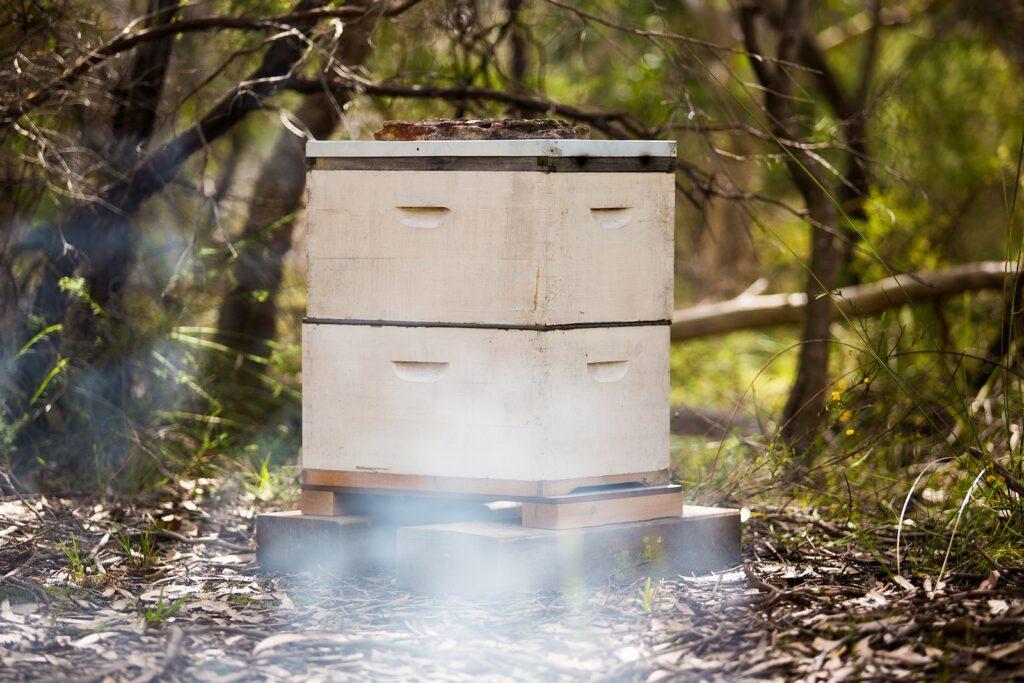
Setting up an Apiary:
- Location Selection: Choose a suitable location for the apiary that provides ample floral resources and water sources for the bees. Access to diverse nectar and pollen sources is crucial for strong and healthy colonies.
- Beehive Type: Select appropriate beehive types, such as Langstroth hives, top-bar hives, or Warré hives, based on your preference, local regulations, and the specific needs of your beekeeping operation.
- Acquiring Bees: Acquire bees either by purchasing established colonies or by capturing swarms during the swarm season.
- Safety Measures: Ensure proper safety measures are in place, including protective gear for beekeepers and suitable fencing to prevent unauthorized access to the hives.
Beekeeping Management:
- Regular Inspections: Regularly inspect the hives to monitor the health and productivity of the colonies, check for signs of disease or pest infestations, and address any issues promptly.
- Feeding and Supplementation: Provide supplementary feeding to the colonies during times of low nectar flow or dearth of floral resources.
- Swarm Management: Implement swarm management techniques to prevent overcrowding and minimize the likelihood of swarming, which can lead to the loss of bees.
- Hive Maintenance: Maintain the hives and equipment in good condition, ensuring they are clean, well-painted, and free from damage.
Harvesting Honey and Other Products:
- Honey Harvesting: Time the honey harvest appropriately when the frames are capped and ready for extraction. Use proper techniques to extract and process honey without compromising its quality.
- Beeswax Harvesting: Collect beeswax during honey harvesting or through specialized methods, such as using solar wax melters.
- Value-Added Products: Consider producing value-added products like beeswax candles, pollen, royal jelly, propolis, or honey-based skincare products to diversify your product range.
Marketing and Sales:
- Branding and Packaging: Develop a unique brand identity for your honey and other bee-related products. Attractive and eco-friendly packaging can enhance their appeal.
- Farmers’ Markets and Local Stores: Participate in farmers’ markets and collaborate with local stores to promote and sell your products within the community.
- Online Sales and Social Media: Utilize e-commerce platforms and social media to reach a wider customer base and showcase the quality and benefits of your bee products.
Sustainability and Bee Health:
- Pesticide-Free Practices: Practice pesticide-free or pesticide-reduction strategies to protect the health of the bees and maintain the purity of your honey.
- Native Planting: Encourage the planting of native and bee-friendly plants around the apiary to provide a diverse and nutritious forage for the bees.
- Pollinator Support: Advocate for pollinator-friendly practices in the community and raise awareness about the importance of bees in agriculture.
Education and Collaboration:
- Continuous Learning: Stay updated with the latest beekeeping practices, research, and innovations through workshops, seminars, and networking with experienced beekeepers.
- Local Beekeeping Associations: Join local beekeeping associations or clubs to connect with like-minded individuals, share knowledge, and support each other in beekeeping endeavors.
Beekeeping offers a rewarding and sweet source of income for farmers while contributing significantly to the environment and agriculture. By establishing a well-managed apiary, producing high-quality honey and bee-related products, and implementing sustainable beekeeping practices, beekeepers can create a thriving enterprise. The crucial role that bees play in pollination further highlights the importance of beekeeping in supporting agriculture and ecological balance. As beekeepers nurture their colonies and promote the well-being of these essential pollinators, they not only gain financial rewards but also become stewards of the environment, contributing to the greater well-being of our planet and its ecosystems.
8. Agroforestry: Trees for Profit
Agroforestry, a sustainable land management approach, offers farmers a unique opportunity to cultivate trees and shrubs that not only contribute to environmental conservation but also generate profitable returns. By combining tree planting with traditional agricultural practices, agroforestry enhances farm productivity, resilience, and biodiversity. This integrated system allows farmers to diversify their crops, tap into multiple revenue streams, and foster a more sustainable and ecologically balanced farming environment. Let’s delve into the world of agroforestry and explore the strategies for turning trees into a profitable venture:
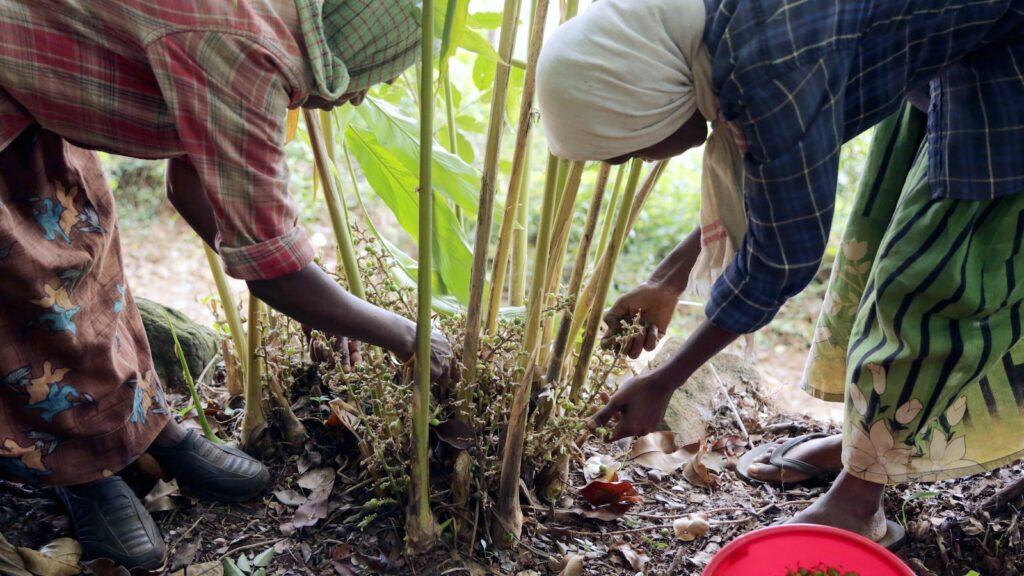
Selecting Tree and Shrub Species:
- Fruit Trees: Consider planting fruit-bearing trees such as apple, citrus, mango, or avocado, which offer delicious and marketable fruits.
- Nut Trees: Nut-producing trees like almonds, pecans, or hazelnuts can be a valuable addition to the agroforestry system, providing a sought-after product.
- Timber Trees: High-value timber species can serve as long-term investments, providing revenue from selective logging or tree sales.
- Medicinal and Aromatic Trees: Explore planting trees with medicinal or aromatic properties, such as neem or eucalyptus, for both commercial and traditional uses.
Proper Tree Spacing and Arrangement:
- Companion Planting: Incorporate tree planting with traditional crops to create synergistic relationships, such as providing shade for shade-tolerant crops.
- Contour Planting: Implement contour planting on sloping land to prevent erosion and optimize water retention, benefitting both trees and understory crops.
- Agroforestry Hedgerows: Establish hedgerows along field boundaries or between crop rows, integrating beneficial trees or shrubs to enhance biodiversity and support pollinators.
Income Diversification:
- Harvestable Products: Trees that produce marketable products like fruits, nuts, or timber provide a direct income source for farmers.
- Value-Added Products: Explore value-added products from tree produce, such as processing fruits into jams or nuts into roasted snacks, to increase profitability.
- Honey and Beeswax: Introduce beehives in agroforestry systems, benefiting from pollination services and producing honey and beeswax for sale.
Environmental Conservation:
- Carbon Sequestration: Trees act as carbon sinks, mitigating climate change by absorbing carbon dioxide from the atmosphere.
- Biodiversity Enhancement: A diverse agroforestry system promotes biodiversity, supporting beneficial insects, birds, and other wildlife.
- Soil Health: Tree roots improve soil structure and nutrient cycling, enhancing the overall health and fertility of the land.
Marketing and Sales:
- Local Markets: Sell fresh fruits, nuts, or value-added products directly to local consumers through farmers’ markets or farm stands.
- Wholesale and Retail: Partner with local retailers, grocery stores, or restaurants to supply tree produce and value-added products.
- Certifications: Obtain organic or fair trade certifications, if applicable, to appeal to environmentally-conscious consumers.
Sustainable Practices:
- Water Management: Implement efficient irrigation methods to optimize water use, especially in drier regions.
- Agroforestry Pruning: Regularly prune and manage trees to maintain their health, productivity, and optimal fruit or nut production.
- Natural Pest Control: Encourage natural pest predators and implement integrated pest management techniques to reduce reliance on chemical pesticides.
Community Engagement:
- Education and Outreach: Raise awareness about agroforestry benefits within the local community and engage in educational activities to promote sustainable practices.
- Collaborative Efforts: Participate in agroforestry networks and cooperatives to share knowledge and resources for mutual benefits.
Agroforestry provides farmers with an innovative and profitable approach to land management, combining tree cultivation with agricultural practices for enhanced productivity and sustainability. By carefully selecting tree and shrub species, adopting proper spacing and arrangement, and diversifying income streams through tree produce and value-added products, farmers can transform their land into a thriving agroforestry system. The harmonious coexistence of trees, crops, and other elements nurtures biodiversity, environmental conservation, and community engagement. As agroforestry systems continue to gain recognition and popularity, they not only offer profitable ventures for farmers but also contribute significantly to global efforts in ecological restoration, climate change mitigation, and sustainable agriculture.
9. Value-Added Products: Processing for Added Value
Value-added products play a pivotal role in modern agriculture, presenting small-scale farmers with an opportunity to increase profitability and create a niche market for their produce. By transforming raw agricultural products into value-added goods through processing, farmers can extend the shelf life, enhance the appeal, and elevate the overall value of their offerings. This strategy not only opens new revenue streams but also fosters a deeper connection with consumers, who are increasingly seeking unique, high-quality, and locally produced items. Let’s explore the world of value-added products and the strategies for successful processing and marketing:

Identifying Marketable Value-Added Products:
- Jams and Preserves: Utilize surplus fruits to create delectable jams, jellies, and preserves, offering consumers a taste of the harvest throughout the year.
- Sauces and Condiments: Process fresh vegetables and herbs into gourmet sauces, chutneys, salsas, or pickles, catering to consumers’ desire for culinary diversity.
- Dried Fruits and Vegetables: Extend the shelf life of perishable produce by drying fruits, vegetables, or herbs, creating healthy and convenient snacks or ingredients.
- Baked Goods: Utilize agricultural products like grains, fruits, or nuts in baking goods like bread, cookies, or granola bars, offering unique and artisanal treats.
Quality Control and Food Safety:
- Standardized Recipes: Develop standardized recipes and processing methods to ensure consistent quality and taste of the value-added products.
- Food Safety Practices: Comply with food safety regulations and maintain high standards of hygiene during processing to guarantee safe and contamination-free products.
- Packaging and Labeling: Employ attractive and informative packaging with clear labeling to convey the product’s identity, ingredients, and nutritional information.
Efficient Processing and Production:
- Batch Processing: Optimize processing efficiency through batch processing, ensuring a steady supply of value-added products while minimizing waste.
- Equipment and Infrastructure: Invest in suitable processing equipment and infrastructure to streamline production and maintain product integrity.
- Cold Storage and Preservation: Implement proper cold storage and preservation techniques to retain the freshness and nutritional value of the processed products.
Market Research and Branding:
- Understanding Consumer Trends: Conduct market research to identify consumer preferences and trends, tailoring value-added products to meet market demands.
- Unique Selling Points: Emphasize the unique qualities and local origin of the value-added products to differentiate them from mass-produced alternatives.
- Branding and Storytelling: Develop a compelling brand story that communicates the passion, dedication, and values behind the value-added products.
Sales and Distribution:
- Farmers’ Markets and Local Events: Participate in farmers’ markets, food fairs, or local events to directly engage with consumers and build a loyal customer base.
- Collaboration with Local Retailers: Establish partnerships with local specialty stores, grocery markets, or restaurants to distribute value-added products within the community.
- Online Sales and E-commerce: Utilize online platforms and social media to reach a wider audience, allowing customers to purchase products directly from the farm.
Certifications and Quality Assurance:
- Organic and Sustainable Certifications: Obtain organic or sustainable certifications, if applicable, to appeal to environmentally-conscious consumers.
- Quality Testing and Assurance: Implement regular quality testing to maintain consistency and exceed consumer expectations.
Community Engagement:
- Tastings and Workshops: Organize tastings, workshops, or cooking demonstrations to showcase the versatility and culinary uses of value-added products.
- Educational Initiatives: Engage with the community through educational initiatives on food processing, sustainable agriculture, and the importance of supporting local farmers.
Value-added products present small-scale farmers with a promising pathway to increasing profits, building brand loyalty, and diversifying revenue streams. By transforming raw agricultural products into delectable jams, sauces, dried fruits, or baked goods, farmers can extend the shelf life and elevate the value of their offerings. Through efficient processing, attention to quality control, and strategic marketing and distribution, farmers can connect with consumers who seek unique and locally sourced products. Value-added products not only benefit farmers financially but also contribute to the growth of sustainable and resilient agricultural systems, fostering stronger connections between producers and consumers, and nurturing a culture of appreciation for wholesome and value-added offerings.
10. Herb or Medicinal Plant Farming: Capitalizing on Health Trends
Herb or medicinal plant farming is a flourishing venture that offers African farmers a unique opportunity to capitalize on the growing global demand for natural remedies and wellness products. With the increasing recognition of the therapeutic properties of herbal and medicinal plants, cultivating these crops on quarter-acre plots can be a profitable and sustainable endeavor. This type of farming not only contributes to the well-being of consumers but also promotes the conservation of traditional knowledge and the biodiversity of indigenous plant species. Let’s explore the world of herb and medicinal plant farming and the strategies for success:

Selecting Medicinal Plants:
- Research and Market Analysis: Conduct thorough research to identify high-demand medicinal plants with strong market potential. Consider the preferences of consumers, health trends, and the feasibility of cultivation in the local climate.
- Native and Indigenous Species: Focus on cultivating native and indigenous medicinal plants to promote biodiversity, preserve traditional knowledge, and conserve local ecosystems.
- High-Value Plants: Prioritize plants known for their therapeutic properties, such as aloe vera, moringa, lavender, or turmeric, which can fetch premium prices due to their health benefits.
Proper Cultivation Techniques:
- Soil Preparation: Ensure the soil is well-drained, fertile, and enriched with organic matter to support healthy plant growth.
- Crop Rotation: Practice crop rotation to maintain soil health, reduce pest and disease pressures, and optimize yields.
- Irrigation and Water Management: Implement efficient irrigation practices, especially in regions with limited water availability, to sustain optimal plant growth.
- Natural Pest Control: Emphasize natural pest control methods, such as companion planting or introducing beneficial insects, to minimize the use of chemical pesticides.
Quality Control and Harvesting:
- Harvesting at the Right Time: Time the harvesting of medicinal plants to coincide with their peak medicinal potency, ensuring the best quality of plant material.
- Post-Harvest Handling: Handle harvested plant material with care to preserve its therapeutic properties during drying, storage, and processing.
- Quality Testing: Conduct regular quality testing of harvested plants to maintain consistency and meet market standards.
Value-Added Products:
- Dried Herbs: Offer dried herbs for culinary and medicinal use, providing customers with a convenient and long-lasting product.
- Herbal Teas: Create herbal tea blends from a variety of medicinal plants, catering to the growing demand for natural and healthy beverages.
- Essential Oils: Consider distilling essential oils from aromatic plants, which are highly valued for aromatherapy and other therapeutic applications.
Market Research and Branding:
- Targeting Health and Wellness Markets: Identify health-conscious consumers, wellness centers, herbal shops, and spas as potential customers for medicinal plants and related products.
- Educating Consumers: Engage in educational marketing to inform consumers about the health benefits and uses of the cultivated medicinal plants.
- Sustainable and Ethical Branding: Highlight sustainable and ethical farming practices to appeal to consumers who prioritize environmental conservation and social responsibility.
Community Engagement:
- Local Awareness Programs: Conduct workshops, seminars, or demonstrations to educate the local community about the value of medicinal plants and their traditional uses.
- Supporting Indigenous Knowledge: Collaborate with local healers, herbalists, or traditional medicine practitioners to exchange knowledge and preserve indigenous plant-based healing practices.
Certifications and Quality Assurance:
- Organic Certification: Pursue organic certification for medicinal plants to meet the demands of health-conscious consumers.
- Good Agricultural Practices (GAP): Implement GAP principles to ensure the safety and quality of medicinal plant production.
Herb or medicinal plant farming presents a lucrative and socially significant opportunity for African farmers to meet the growing global demand for natural remedies and wellness products. By selecting high-value medicinal plants, adopting proper cultivation techniques, and offering value-added products, farmers can establish a steady and sustainable income source. As the popularity of herbal and medicinal plants continues to soar, this form of farming not only provides financial benefits but also contributes to the well-being of consumers, the preservation of traditional knowledge, and the conservation of indigenous plant species. Through community engagement, ethical branding, and a commitment to quality, farmers can play a vital role in promoting the use of herbal and medicinal plants for improved health and sustainable livelihoods.
11. Education and Workshops: Sharing Knowledge for a Fee
Offering training workshops and courses in agriculture is not only a lucrative venture but also a fulfilling way to contribute to the growth and development of the local farming community. Farmers with expertise in various aspects of agriculture can play a vital role as mentors, educators, and facilitators, sharing their knowledge, best practices, and innovative techniques with fellow farmers. By organizing educational events and charging a fee for participation, farmers can create an additional income stream while fostering a culture of continuous learning and improvement within the agricultural sector. Let’s explore the world of agricultural education and the strategies for successfully sharing knowledge and skills:

Identifying Target Audiences:
- Fellow Farmers: Organize workshops and courses tailored to the needs and interests of other farmers, addressing specific challenges and opportunities in the local agricultural landscape.
- Aspiring Farmers: Offer training programs for individuals considering a career in agriculture, guiding them through the essential skills and knowledge required for successful farming.
- Schools and Institutions: Collaborate with educational institutions to provide agricultural education programs for students interested in agriculture or related fields.
Planning and Curriculum Development:
- Needs Assessment: Conduct a needs assessment to identify the topics and areas of interest that would be most beneficial to the target audience.
- Curriculum Design: Develop comprehensive and practical curriculum modules that cover a range of agricultural topics, from crop management to sustainable practices and marketing.
- Expert Guest Speakers: Invite industry experts, agricultural scientists, and successful farmers to share their insights and experiences as guest speakers during workshops and courses.
Workshop Logistics:
- Venue Selection: Choose appropriate venues with suitable facilities and resources to accommodate participants comfortably.
- Scheduling: Plan workshops and courses at times that align with the agricultural calendar and the availability of the target audience.
- Materials and Resources: Prepare handouts, visual aids, and reference materials to complement the learning experience.
Marketing and Promotion:
- Online Presence: Establish a website or social media presence to promote the workshops and courses and provide information on the topics covered and registration details.
- Networking: Collaborate with local agricultural organizations, farming communities, and agricultural extension services to spread the word about the educational offerings.
- Testimonials and Success Stories: Share testimonials and success stories from previous participants to showcase the benefits of attending the workshops or courses.
Setting Fees and Financial Considerations:
- Pricing Strategy: Determine a fair and competitive fee structure for the workshops or courses, considering the value provided, the duration, and the expertise of the facilitators.
- Group Discounts and Packages: Offer group discounts or package deals for multiple workshops to encourage participation and build a sense of community among participants.
- Budgeting and Cost Management: Carefully manage expenses to ensure profitability while maintaining a high-quality learning experience.
Continuous Improvement:
- Feedback and Evaluation: Encourage participants to provide feedback after each workshop or course to identify areas for improvement and address any concerns.
- Update and Adapt: Regularly update and adapt the curriculum to reflect changing agricultural practices, emerging trends, and the evolving needs of the target audience.
Collaboration and Partnerships:
- Community Engagement: Engage with the local farming community to understand their specific needs and build long-term relationships.
- Partnering with Organizations: Collaborate with agricultural research institutions, NGOs, or government agencies to access additional resources and reach a wider audience.
Education and workshops in agriculture present farmers with a rewarding opportunity to share their expertise, foster continuous learning, and contribute to the growth and development of the local farming community. By identifying target audiences, designing comprehensive curricula, and implementing effective marketing strategies, farmers can create a thriving educational venture. As farmers inspire, guide, and empower their fellow agriculturalists, they not only generate an additional income stream but also become catalysts for positive change within the farming sector. The knowledge shared and skills imparted in these educational endeavors contribute to the advancement of sustainable agriculture, improved farming practices, and the collective success of the agricultural community.
Conclusion
Earning 100,000 Kenyan Shillings ($1000) per month on a quarter-acre of land in Africa is challenging but feasible with the right approach. By adopting innovative agricultural techniques, tapping into niche markets, and adding value to products, farmers can unlock the full potential of their land and create sustainable income streams. Furthermore, continuous learning, networking, and adapting to changing market demands are crucial for long-term success in the pursuit of agricultural prosperity.


